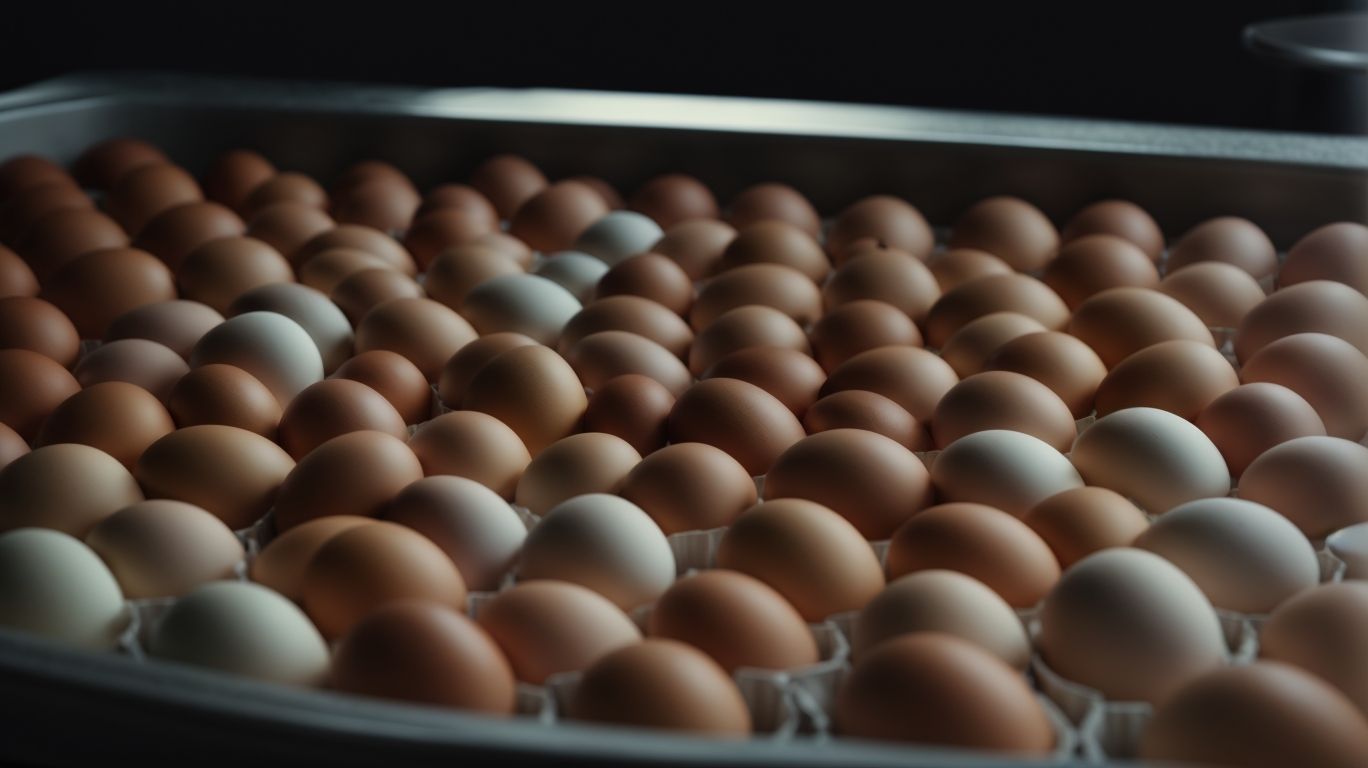How to Bake Eggs in the Oven?
Are you looking for a quick and easy way to prepare eggs for a delicious meal? Baking eggs in the oven can be a game-changer! Not only does it save you time and effort, but it’s also perfect for meal prep and easy to customize to your liking. In this article, we will explore the different types of eggs you can bake, the ingredients you’ll need, a step-by-step guide to baking eggs in the oven, tips and tricks for perfect results, and how to serve your baked eggs. So, let’s dive in and discover the wonderful world of baked eggs!
Key Takeaways:
Why Bake Eggs in the Oven?
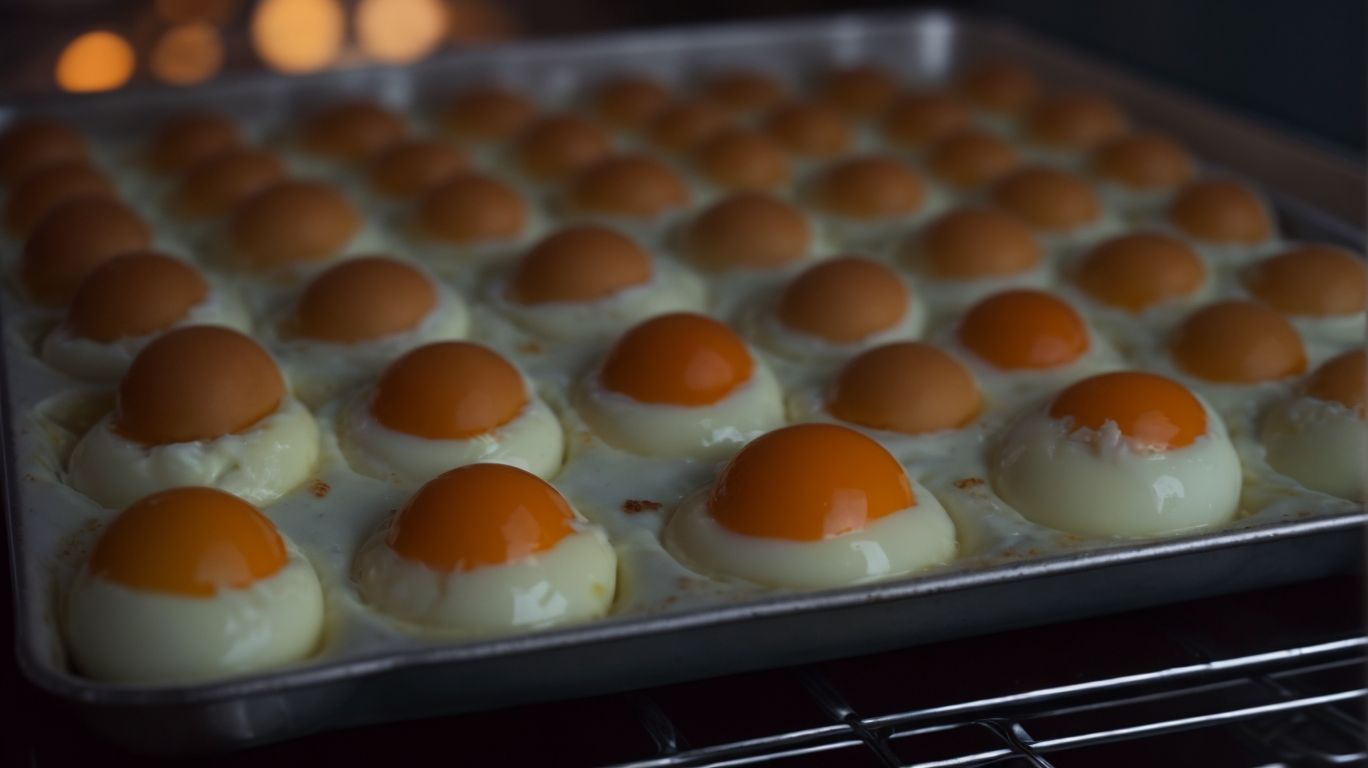
Credits: Poormet.Com – Terry Wilson
Baking eggs in the oven offers a convenient and efficient method for preparing this versatile ingredient, saving time and effort while delivering delicious results.
One of the key advantages of using this method is the ability to prepare multiple servings simultaneously by utilizing a standard muffin tin. By cracking eggs into each individual cup and adding various ingredients like cheese, vegetables, or herbs, you can customize each portion to cater to different preferences.
The cooking process is remarkably hands-off, allowing you to attend to other tasks while the eggs bake to perfection. This technique also offers consistent results, ensuring that each egg is cooked evenly with a creamy yolk and firm whites.
Baking eggs in the oven eliminates the need for vigilant stovetop monitoring, reducing the risk of overcooking or undercooking. The result is a hassle-free cooking experience that guarantees a tasty and visually appealing outcome.
Saves Time and Effort
Baking eggs in the oven saves time and effort as it eliminates the need for constant monitoring and offers a hands-off approach to achieving perfectly cooked eggs.
By utilizing the oven’s consistent heat distribution, the eggs cook evenly without the risk of overcooking the edges or undercooking the centers, creating a uniform texture throughout. The convenience of using a sheet pan allows for multiple eggs to be prepared simultaneously, making it ideal for large gatherings or meal prepping. By adjusting the cooking time, it is possible to achieve various textures, from soft and runny yolks to fully set eggs, all within a matter of minutes.
Perfect for Meal Prep
Baked eggs are ideal for meal prep, allowing you to cook a large batch at once for quick and easy breakfasts, lunches, or dinners throughout the week.
One of the key advantages of baking eggs is the versatility it offers in recipe customization. You can easily adjust ingredients to tailor the flavors to your preferences, whether you prefer a savory or a more breakfast-style option. By using different pans and ingredients such as vegetables, meats, or cheeses, you can create a variety of dishes, from simple scrambled eggs to more sophisticated frittatas.
Easy to Customize
Baking eggs in the oven allows for easy customization, enabling you to experiment with different ingredients such as cheese, herbs, or vegetables to create unique and flavorful dishes.
One of the great aspects of baking eggs is the versatility it offers. Whether you are a fan of a gooey yolk topped with melty cheese or prefer to spice things up with a sprinkle of red pepper flakes, the possibilities are endless. You can play around with various herbs like chives or dill to elevate the flavors and add a touch of freshness to your dish.
In terms of the baking vessel, the choice of pan can significantly impact the texture and outcome of your eggs. A muffin tin is perfect for creating individual portions, while a cast-iron skillet gives a rustic and crispy edge. For a lighter option, consider using a non-stick metal baking sheet for a more delicate finish.
Cooking tips can be invaluable when modifying recipes to suit your preferences. To ensure your eggs are perfectly cooked, remember to preheat your oven, adjust cooking times based on your desired doneness, and always err on the side of undercooking as eggs will continue to cook after being removed from the oven. With these tips, you can confidently explore the world of baked eggs and create dishes that cater to your unique taste preferences.”
What Types of Eggs Can You Bake?
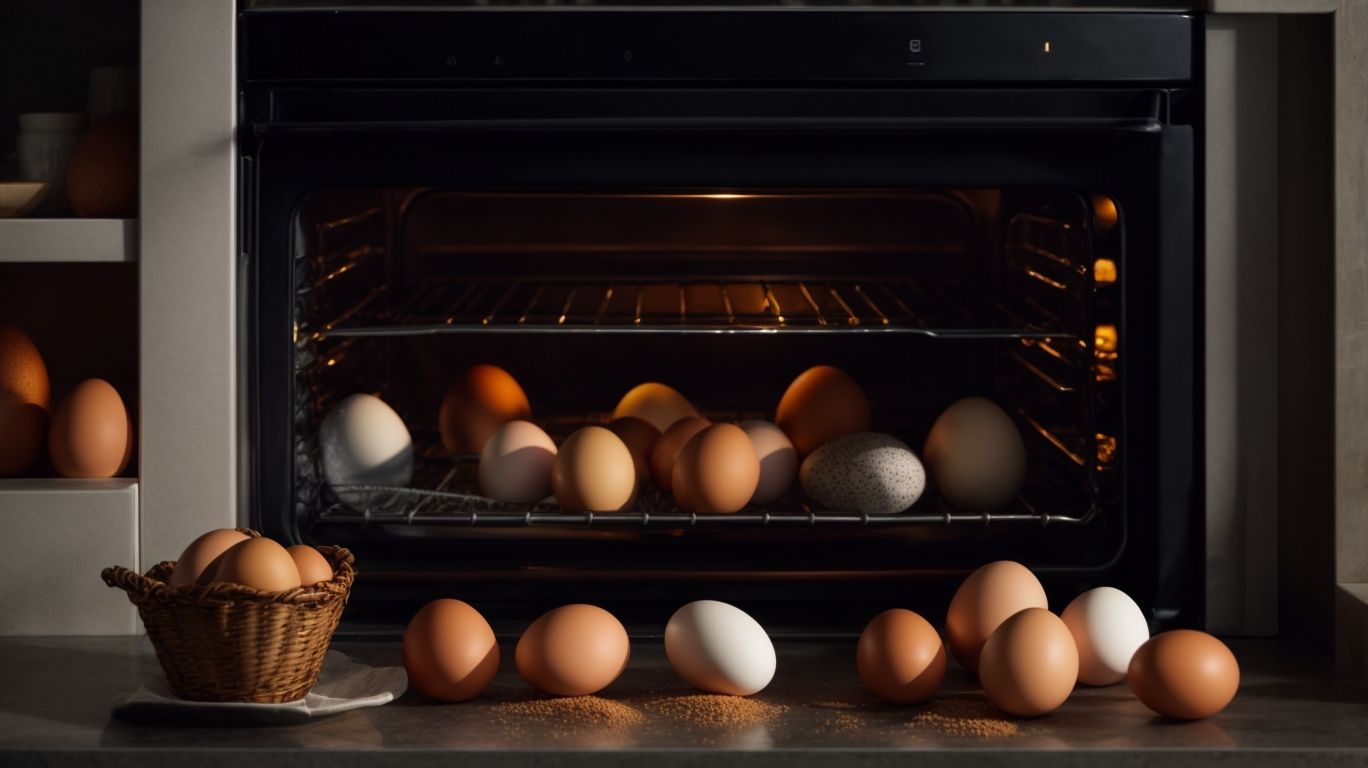
Credits: Poormet.Com – Jack Ramirez
In terms of baking eggs, you have the choice of whole eggs, scrambled eggs, or delightful baked egg cups, each offering a unique and delicious experience.
Baking whole eggs involves cracking the egg into a greased ramekin or muffin tin, then seasoning with salt and pepper before placing in the oven until the white is set but the yolk remains runny.
For scrambled eggs, beat the eggs with milk, salt, and pepper, then pour into a baking dish and bake until fluffy.
For creative baked egg cups, line muffin tins with ham or bacon, crack an egg into each cup, add toppings like cheese or veggies, and bake until the eggs are cooked to perfection.
Whole Eggs
Baking whole eggs in the oven presents a simple yet satisfying way to enjoy this nutritious food, allowing for easy preparation and minimal cleanup.
When baking whole eggs in the oven, all you need to do is crack them into a greased ramekin or muffin tin, season with salt and pepper, and bake until the egg whites are set but the yolks are still runny—the hallmark of a perfectly baked egg. This minimalist approach to cooking eggs highlights their natural flavor without the need for additional ingredients or complex techniques.
Recipe simplicity is at the core of oven-baked whole eggs, making it a versatile dish that can be customized to suit different tastes and dietary preferences. For a classic touch, you can add a sprinkle of herbs like chives or parsley before baking, or get creative by incorporating ingredients like cheese, bacon, or vegetables to elevate the flavors.
Scrambled Eggs
Baking scrambled eggs offers a unique twist to this classic breakfast staple, providing a fluffy and flavorful alternative to stovetop cooking.
One of the key advantages of oven-cooking scrambled eggs is the consistency it brings to the dish. Using the oven helps to cook the eggs evenly and gently, resulting in a creamy texture that is hard to achieve on the stovetop. Baking allows for a hands-off approach, freeing up time to prepare other components of the meal or tend to other tasks. For those looking to innovate their recipes, consider adding ingredients like sautéed mushrooms, spinach, or feta cheese to the scrambled eggs mixture before baking. These additions can elevate the dish with new flavors and textures.
Baked Egg Cups
Creating baked egg cups in a muffin tin opens up a world of possibilities for delightful individual servings, perfect for brunches or on-the-go meals.
Whether you’re looking for a quick and easy breakfast option or planning a fancy brunch affair, these baked egg cups can cater to various occasions. To make them, simply crack an egg into each greased muffin cup, then sprinkle with your favorite ingredients like cheese, veggies, or even bacon. The key is to bake them just right – at around 350°F for about 15-20 minutes until the yolks reach your desired consistency.
Don’t limit yourself to traditional recipes; get creative with the fillings! For a Mexican twist, add salsa, black beans, and avocado. Or for an Italian flair, try sun-dried tomatoes, basil, and mozzarella. The options are endless, allowing you to customize these egg cup recipes to suit your taste preferences or dietary needs. Whether you’re hosting a gathering or meal prepping for the week, these baked egg cups in a muffin tin are sure to become a staple in your culinary repertoire.
What Ingredients Do You Need?
To bake delicious eggs in the oven, you’ll need essential ingredients like eggs, milk or cream for added richness, cheese for flavor, and a variety of seasonings to elevate the taste.
In terms of milk or cream, the choice is up to you; opt for whole milk for a richer texture or cream for a decadent finish. Different types of cheese can bring a unique twist to your baked eggs – think sharp cheddar for a robust flavor, creamy goat cheese for tanginess, or gooey mozzarella for a stringy texture.
Experiment with seasonings like fresh herbs such as parsley, chives, or dill to add a burst of freshness. Flavor enhancers like garlic powder, smoked paprika, or a dash of hot sauce can take your baked eggs to the next level.
Eggs
Eggs are the star ingredient when it comes to baking this versatile and nutritious food, offering a multitude of recipe possibilities to satiate your culinary cravings.
Not only do eggs provide structure and stability to baked goods, but they also contribute to the overall richness and moisture in a range of recipes. Their unique protein composition helps in creating light and fluffy textures in cakes, while their emulsifying properties are essential in creating smooth batters for pastries and custards.
Eggs are packed with essential nutrients like protein, vitamins, and minerals, making them a wholesome addition to any dish. Whether you’re making a decadent chocolate cake, fluffy pancakes, or delicate soufflés, eggs play a crucial role in enhancing flavors and textures.
Milk or Cream
Incorporating milk or cream into your baked eggs recipe adds a creamy texture and richness that elevates the dish to a new level of indulgence and flavor.
When you whisk milk or cream into the eggs before baking, it creates a luscious custard-like texture that melts in your mouth with each bite. The milk’s proteins help set the eggs, providing a smooth and velvety consistency.
Moreover, cream brings an extra level of decadence, making the dish more luxurious and satisfying. The fat content in cream adds richness that enhances the overall flavor profile of the baked eggs.
For a lighter option, you can opt for skim milk or a non-dairy alternative like almond milk, but keep in mind that it may result in a slightly less creamy outcome.
Cheese
Cheese is a delightful addition to baked eggs, offering a savory and gooey element that enhances the overall taste and texture of the dish.
When choosing the right cheese for your baked egg creation, consider the varying flavor profiles of different types. Gruyère can bring a nutty richness, while cheddar offers a sharp tanginess. Experiment with Parmesan for a salty bite or mozzarella for that stretchy, gooey texture. To achieve optimal results, melting techniques play a crucial role. Layering slices of cheese on top ensures a golden, bubbly finish, while mixing grated cheese into the egg mixture allows for thorough flavor infusion.
Seasonings
Seasonings play a crucial role in elevating the flavors of baked eggs, allowing you to customize your dish with a blend of herbs, spices, or condiments for a personalized culinary experience.
The provided text is already wrapped within
tags, so no additional formatting is needed.
Step-by-Step Guide to Baking Eggs in the Oven
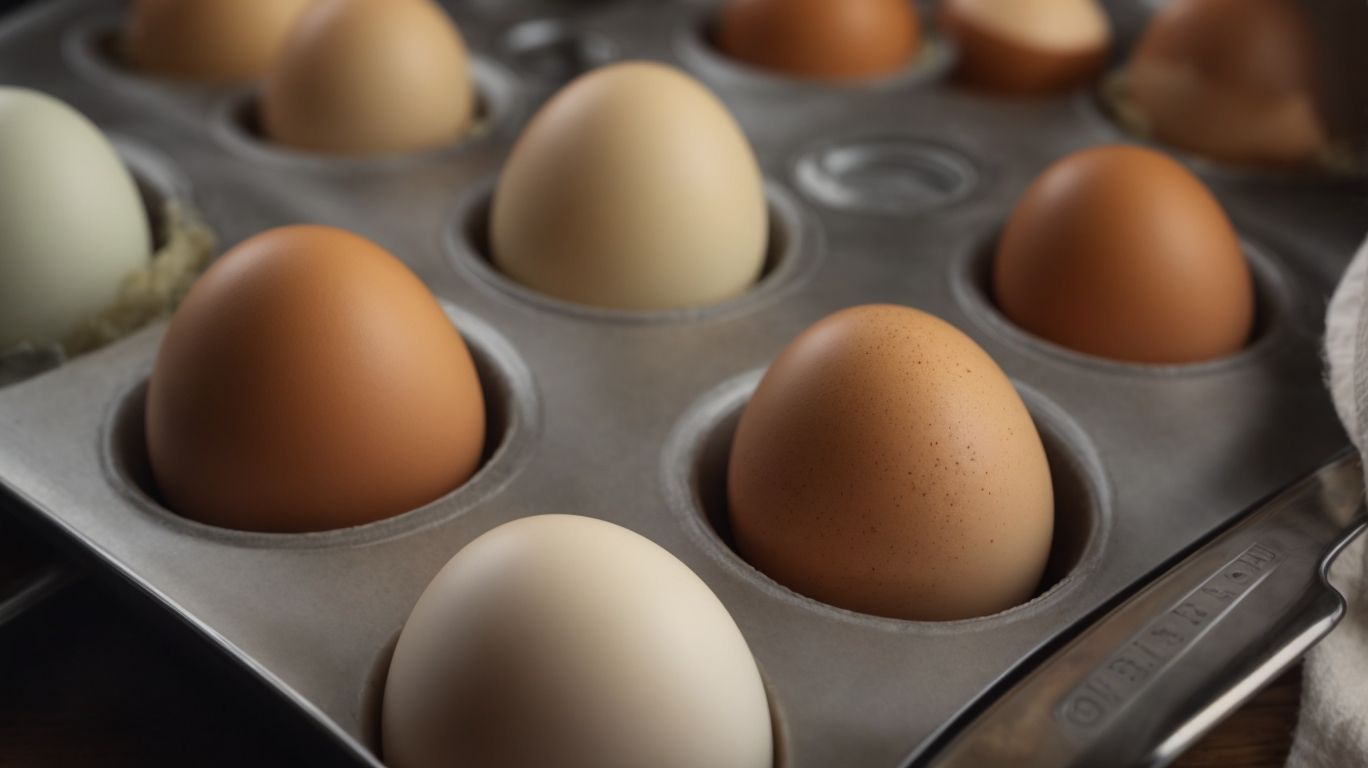
Credits: Poormet.Com – Ethan Johnson
Mastering the art of baking eggs in the oven involves a series of simple yet essential steps that ensure a delightful culinary outcome every time.
First, preheat your oven to the desired temperature, typically around 350°F (175°C). While the oven is heating up, prepare a baking dish or muffin tin depending on your preference. For a classic approach, opt for a buttered baking dish; for individual servings, use a muffin tin lined with parchment paper for easy removal.
Next, crack the eggs into the prepared dish or tin, ensuring even spacing to allow for proper cooking. To add more flavor and variety, consider incorporating ingredients such as diced vegetables, crumbled bacon, or grated cheese. These additions not only enhance the taste but also provide a visually appealing presentation.
Place the dish or tin in the oven and bake for about 12-15 minutes, depending on your desired doneness. Watch the eggs to prevent overcooking, aiming for a firm white and a slightly runny yolk for the perfect baked egg. Once done, carefully remove the dish or tin from the oven using oven mitts to prevent burns. Let the eggs cool for a minute before serving hot, garnished with fresh herbs or a sprinkle of salt and pepper.
Preheat the Oven
The first step in baking eggs is to preheat the oven to the recommended temperature, ensuring a consistent heat environment for the eggs to cook evenly and thoroughly.
Preheating the oven is a crucial aspect of the baking process as it allows the eggs to begin cooking as soon as they are placed inside. The recommended temperature for baking eggs is typically around 350°F (175°C) to 375°F (190°C), depending on the desired consistency. Keeping a stable and accurate oven temperature is key to achieving the perfect texture and doneness for your baked eggs. If the oven is not preheated properly or if the temperature fluctuates during baking, it can lead to uneven cooking and affect the overall taste and texture of the dish.
Prepare the Baking Dish
Selecting the right baking dish or pan is essential for baking eggs, ensuring that the eggs are cooked uniformly and that the dish is easy to clean post-baking.
When choosing a baking dish for eggs, consider the material of the pan. A non-stick pan is ideal for preventing the eggs from sticking and simplifying the cleaning process. For a classic touch, opt for a cast iron skillet, which provides even heat distribution and a rustic flavor. If you prefer fluffy and delicate eggs, a ceramic baking dish is a great choice. Make sure the pan is compatible with your oven to ensure optimal baking results. To maintain your baking dish, hand washing is recommended to preserve its quality.
Crack and Beat the Eggs
Cracking and beating the eggs is a fundamental step in preparing them for baking, ensuring a smooth and consistent texture throughout the dish.
When incorporating eggs into a recipe preparation, it’s essential to crack them precisely to avoid any shell fragments. To achieve this, tap the egg gently on a flat surface, then open it over a separate bowl to catch any loose shells. Once cracked, the egg handling begins; use a whisk or fork to beat the eggs until the yolk and whites are well combined. The goal is to create a homogeneous mixture that will result in a perfectly textured baked product.
Add in Additional Ingredients
Adding extra ingredients such as cheese, herbs, or vegetables enhances the flavor profile of baked eggs, elevating the dish to a gourmet culinary experience.
For a gourmet touch, consider incorporating smoked salmon or truffle oil into your baked eggs. These gourmet enhancements add a luxurious and indulgent element to the dish. You can experiment with different flavor infusions such as sundried tomatoes, caramelized onions, or prosciutto for a more dynamic taste profile.
To complement the richness of the eggs, a sprinkle of tangy feta or sharp cheddar can provide a delightful contrast. Fresh herbs like chives, parsley, or tarragon can bring a burst of freshness to the dish, elevating it to a whole new level of sophistication.
Bake in the Oven
Placing the prepared eggs in the oven for the specified time ensures that they are cooked to perfection, with the delicious aromas signaling their readiness for consumption.
When baking eggs in the oven, it is essential to follow the cooking durations closely to achieve the desired result. The temperature setting plays a crucial role in determining how fast the eggs cook, with adjustments needed depending on the size and type of eggs used. Oven monitoring is key during the process, as slight variations in temperature can impact the final outcome. Visual cues like the whites being fully set and the yolks reaching the desired consistency indicate that the eggs are done and ready to be enjoyed.
Tips and Tricks for Perfectly Baked Eggs
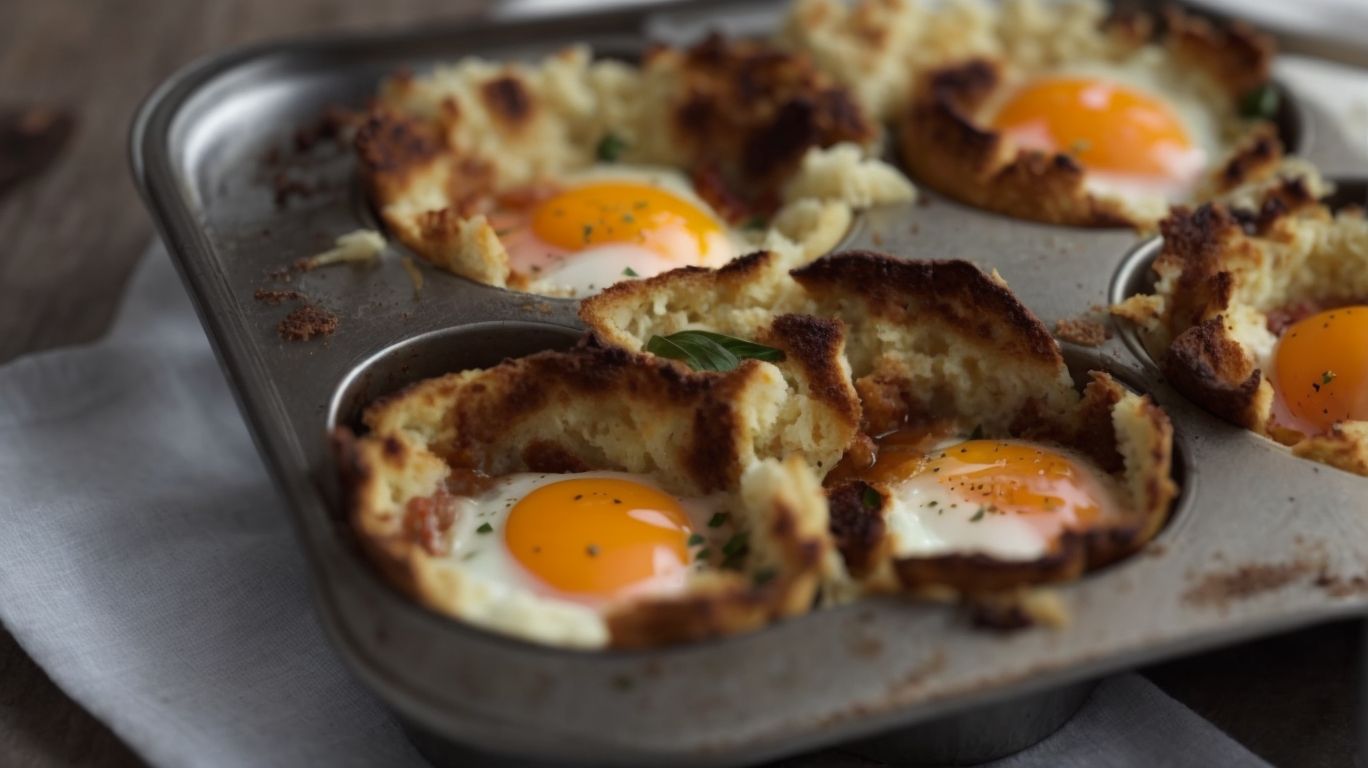
Credits: Poormet.Com – Carl Gonzalez
Achieving the perfect baked eggs requires attention to detail and a few handy tips and tricks that can elevate your culinary skills to new heights.
In terms of baking precision, setting the oven temperature correctly is crucial. Preheat it to the specified degree to ensure even cooking and avoid undercooked or overdone eggs.
Consider the pan selection carefully. Opt for a non-stick pan to prevent sticking and allow for easy removal of the eggs post-baking.
Experimenting with different flavor combinations, such as adding herbs or spices before baking, can also enhance the overall taste of your baked eggs.
How to Serve Baked Eggs
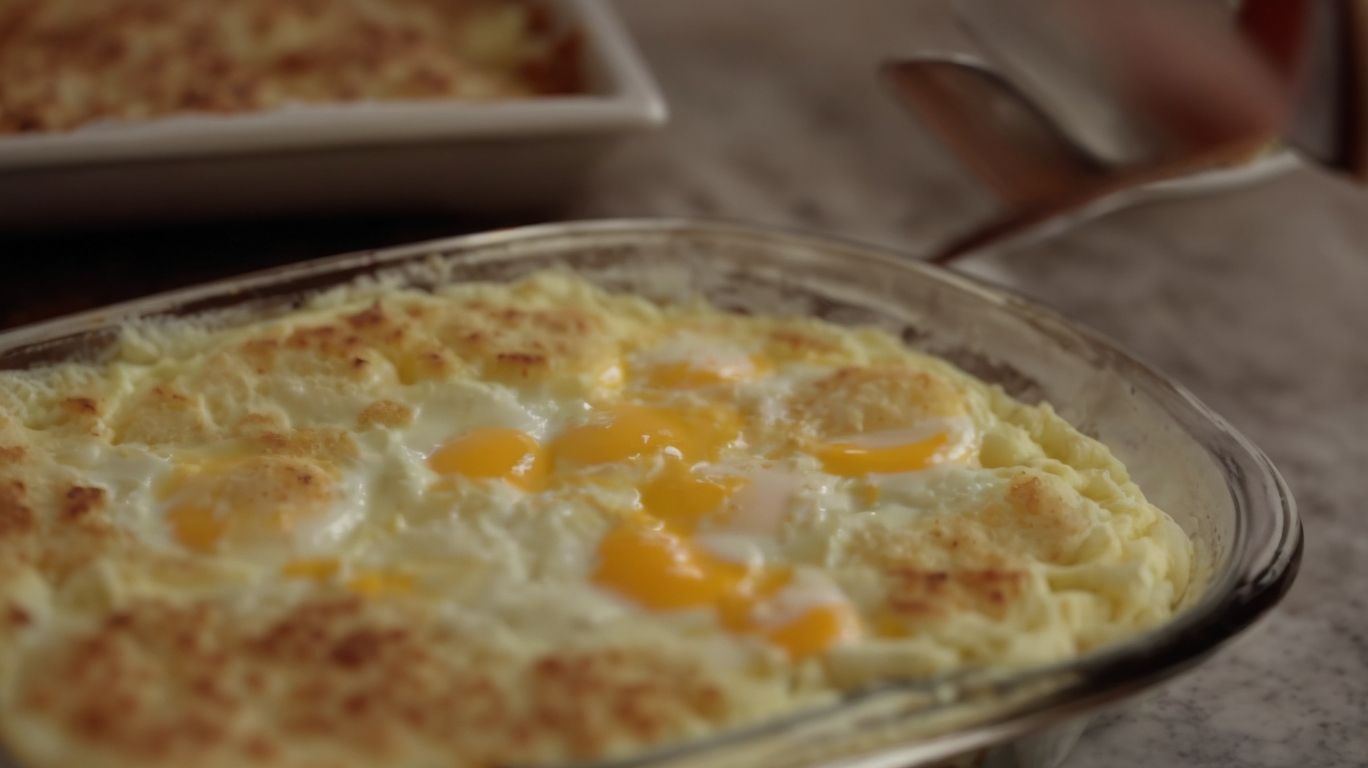
Credits: Poormet.Com – Terry Carter
Serving baked eggs opens up a world of presentation possibilities, allowing you to plate up delightful dishes that cater to different tastes and preferences.
One creative way to serve baked eggs is in individual ramekins or small, colorful oven-safe dishes. This not only adds a touch of elegance to the presentation but also allows for personalized portions.
When considering pairing options, think about complementing the rich flavors of the eggs with ingredients like creamy avocado, salty feta cheese, or tangy salsa. Creating a well-balanced meal presentation is key to a memorable dining experience.
Conclusion: Experiment and Enjoy!
Baking eggs unlocks a realm of culinary experimentation and enjoyment, inviting you to explore various recipes, flavors, and meal possibilities with this versatile ingredient.
One of the key benefits of baking eggs is the gentle cooking process that results in a creamy texture and rich flavor, perfect for enhancing a wide array of dishes. Whether you prefer to bake eggs with vegetables for a nutritious breakfast casserole or incorporate them into savory quiches or frittatas, the options are endless.
Recipe exploration can lead you to discover new and exciting flavor combinations, allowing your culinary creativity to flourish and impress your taste buds. Try experimenting with different ingredients, spices, and cooking methods to create unique and delicious egg-based dishes that will delight both yourself and your loved ones.
Frequently Asked Questions
1. How to Bake Eggs in the Oven?
Baking eggs in the oven is a simple and delicious way to prepare them. It’s perfect for when you have a large number of eggs to cook or want to save time and effort.
2. Can I bake eggs in the oven without a muffin tin?
Absolutely! While using a muffin tin makes for perfectly shaped and portioned eggs, you can also bake eggs in a regular baking dish or ramekins. Just make sure to grease the dish or use parchment paper to prevent sticking.
3. What temperature should I bake eggs in the oven?
The ideal temperature for baking eggs in the oven is 375°F (190°C). This allows the eggs to cook evenly and set without becoming rubbery.
4. How long does it take to bake eggs in the oven?
It typically takes 12-15 minutes to bake eggs in the oven. However, this may vary depending on the size and type of dish you use, so keep an eye on them and adjust baking time accordingly.
5. Can I add vegetables or other toppings to my baked eggs?
Absolutely! Baked eggs are a great opportunity to add in some extra flavor and nutrition. You can add in vegetables like spinach, tomatoes, or bell peppers, or even top it with cheese for a decadent twist.
6. Are there any special tips or tricks for baking eggs in the oven?
One tip is to crack the eggs into a separate bowl before pouring them into the baking dish. This helps ensure that no broken shells end up in your final dish. Additionally, you can lightly beat the eggs before pouring them for a fluffier texture.

